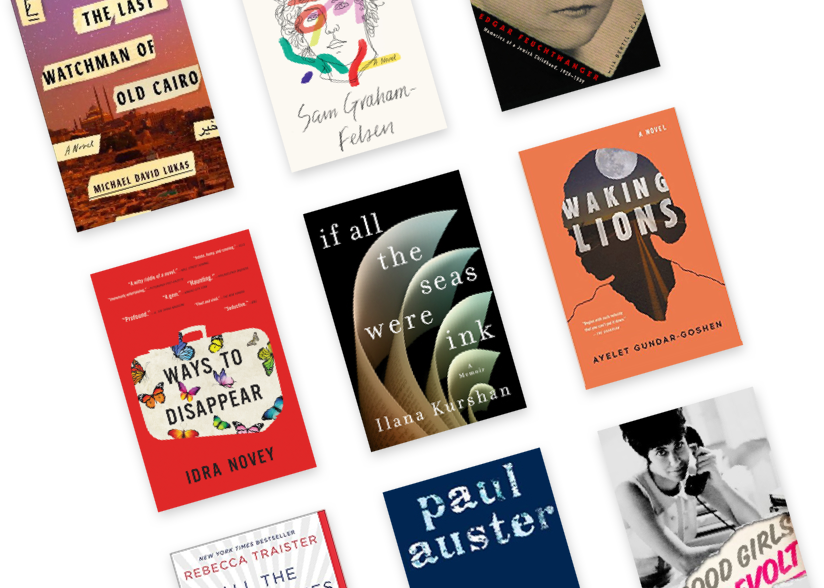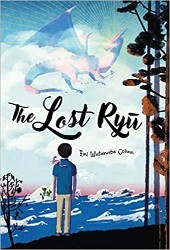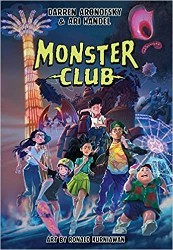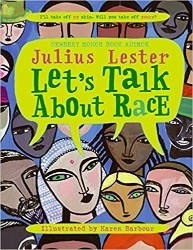Golems, figures from Jewish mythology who appear in books for adults and children alike, do not enter the world organically. They are created in order to serve a purpose. When Jews are under attack, these clay statues become potential rescuers, but only if they are brought to life by a human through the power of the Hebrew alphabet. Although there are several different versions of the legend, many describe how the letters of the word “emet,” for “truth,” can be transformed into “met,” or “death,” by removal of the initial “aleph.” In Golemcrafters, a new middle grade novel by Emi Watanabe Cohen, Faye Meisel and her brother, Shiloh, are struggling with tensions at home and antisemitism in their middle school. A week visiting their estranged Zeyde restores to Faye and Shiloh the practice of creating a golem, a part of their Jewish heritage rejected by their father.
Faye and Shiloh’s mother is Japanese American. She was raised Catholic, and has negative feelings about her religious upbringing. At the same time, she makes a distinction between alienating belief systems and her children’s heritage through their Jewish father. Faye and Shiloh learned some Japanese, and Shiloh has become a bar mitzvah, a Jewish adult. They remain ambivalent about their identity, and have even invented a hybrid language, Effalese, melding Hebrew and Japanese. Both Faye and Shiloh are aware that, like all Jews throughout history, they are living in perilous times. Watanabe Cohen is careful to avoid equating their sense of threat with other tragedies, but she does not dismiss their fears. Vandalism and violence are part of their experience, and Faye even remembers a journalistic headline, “This Is the End of the Golden Age of American Jewry.” (An article with a similar title, by Franklin Foer, recently appeared in the Atlantic.)
Faye and Shiloh’s grandfather’s apartment in New York City is not so distant from their home in Boston. But once they arrive there, strange events begin to happen. The line between dreams and residence in an alternate universe becomes blurred. The Meisel siblings are acutely aware of remembrance as a Jewish value. The Other Realm that engulfs them is not a parallel world, but one entered through the portal of memories. Ancestors, distant and recent, guide Faye and Shiloh through multiple paths of Jewish culture. Their grandfather has taught them the painstaking process of crafting golems from a special clay. “You start with the torso,” Zeyde instructs them, because “stories always tell you about the head or the limbs, but a golem’s soul is in its heart.”
Both Faye and Shiloh, but particularly Faye, bring a wealth of knowledge about literature to their new quest. References to the Narnia novels, Alice in Wonderland, and The Wonderful Wizard of Oz, are woven into their conversations, but so is Faye’s familiarity with the Maharal of Prague, and Bialik’s devastating poem, “City of Slaughter.” The author includes an extensive bibliography at the novel’s conclusion, evidence of her extensive research. More impressive than the number of sources is the way she has integrated Jewish literacy into her work. Each allusion to the Jewish past strengthens Faye’s conviction that antisemitism is the fault of its perpetrators, never its victims. “People like us best when we’re defenseless,” she remarks in frustration. She engages with Shiloh in a contentious argument about the most productive response to hatred. The novel is not a definitive answer to their questions, but rather a deeply engaging and highly recommended story that will resonate with attentive readers.
Emily Schneider writes about literature, feminism, and culture for Tablet, The Forward, The Horn Book, and other publications, and writes about children’s books on her blog. She has a Ph.D. in Romance Languages and Literatures.





